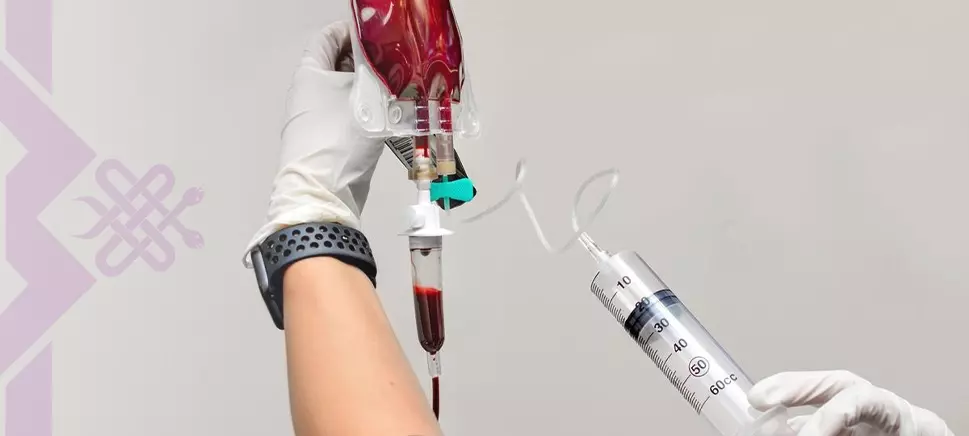What is Ozone Therapy? How is it Applied?
-
 22 July 2023
22 July 2023
-
 Maltepe Hospital
Maltepe Hospital
- Physical Therapy and Rehabilitation

What is Ozone Therapy? How is it Applied?
Table of Contents
-
How Long is Ozone Therapy a Known Treatment?
-
How is Ozone Therapy a Treatment? What is Ozone’s Mechanism of Action?
-
Does Ozone Therapy Have Side Effects?
-
Is There a Disease in Which the Application of Ozone Therapy is Harmful?
-
How Long Has Ozone Therapy Been a Known Treatment?
Firstly, in the 1900s, Dr. Clarke HJ’s ozone diabetes, anemia, cancer, and morphine poisoning using this miraculous application method, Albert WOLF during World War I. He contributed by treating gangrenous wounds with ozone. After the increasing interest of doctors in ozone and their trials in the treatment of many diseases, for the first time in 1980, Horst Kief scientifically announced that he had treated an AIDS patient with ozone. In 1972, the medical ozone association established in Germany continued its work, while the Russians added ozone to burn treatments in 1992. In Turkey, established in 2000, the medical ozone association’s work with the work of treatments have gained momentum and first in 2011 at Gazi University Prof. Dr. Ozone center was established under the leadership of Avni Babacan.
How is Ozone Therapy a Treatment? What is Ozone’s Mechanism of Action?
Ozone is a colorless, pungent-smelling gas consisting of three oxygen atoms found in nature. It is found in gaseous form in nature. It is a very powerful disinfectant, antimicrobial, immune system regulator and antioxidant. It also has the effect of increasing blood fluidity, stimulating blood production and pain relief. As it is known, as a result of the daily construction and destruction of cells in our body, in addition to the energy produced and used, a number of by-products are produced, which circulate as free 02 radicals and damage the cells. In particular, smoking, environmental pollution, radiation, heavy painkillers and the use of cancer drugs increase the formation of free radicals. Arteriosclerosis, AIDS, cancer, intestinal diseases, diabetes, cataracts, Parkinson’s, destruction of nerve cells and premature births are among the diseases that may occur in the body due to the increase in free radicals in the body.
The application forms of ozone therapy are categorized under three headings.
-
Major applications: This is the basic application method. It is an application that requires experience and meticulousness by specially trained personnel, using special equipment and devices. Ozone is added to 100 cc of blood taken from the patient at a dose to be determined by the doctor according to the diagnosis of the disease and given to the patient intravenously. An application time is short and painless, not exceeding about 15 minutes. It is usually done in three applications per week and 12 applications in total. In chronic cases, it is also recommended to apply a maintenance dose once a month.
-
Minor applications: It is a form of ozone therapy combined with other complementary medicine methods rather than applying alone. 5cc of blood taken from the patient is mixed with 5cc of ozone and injected into the muscle, not intravenously this time. A total of 12 applications are performed 2 or 3 times a week. It can also be combined with major applications.
-
Local applications: In addition to local applications to soft tissues, in and around the joint, in and around the wound, there is also a rectal application method, and the type and duration of treatment is determined by the doctor who undertakes the treatment.
Does Ozone Therapy Have Side Effects?
When ozone gas is inhaled, it can irritate the toxic eyes and airways. However, no side effects have been observed in applications with an experienced and trained team.
Is There a Disease in Which the Application of Ozone Therapy is Harmful?
Ozone therapy is not recommended in hyperthyroidism and Favism disease (glucose 6 phosphate dehydrogenase enzyme deficiency) The use of ozone therapy in pregnant women and children is at the discretion of the doctor and no negative situation has been reported so far. Which diseases are treated with ozone? Ozone therapy usually takes part in complementary medicine in addition to the existing and routine treatments of diseases, and sometimes it can also be applied to protect against side effects caused by other treatment methods (such as cancer drugs). In some cases, ozone therapy is also applied alone in diseases that do not respond to other treatments or in diseases that cannot be given medical treatment due to drug side effects.
The diseases that benefit the most from ozone applications are infected skin wounds, pressure sores, burns, chronic ulcers, diabetic feet, bone inflammation (osteomyelitis), mouth sores, chronic fatigue and fibromyalgia, and (osteoarthritis) joint discomfort and pain caused by calcification and neuropathic pain, ozone therapy is extremely effective.
In addition to these diseases, ozone therapy is often preferred to support the immune system in addition to the treatment applied in cancer treatments, to accelerate the repair of damaged normal tissues and to provide regeneration in cells and to remove free radicals that occur in cells after chemotherapy.
Multiple sclerosis, rheumatoid arthritis and crohn’s disease, which are immune system diseases, as well as chronic liver diseases and chronic lung diseases, asthma and allergies, are also recommended as supportive treatments.
Ozone therapy is also applied in healthy individuals within the scope of preventive treatment due to its antiaging and antioxidant properties.









